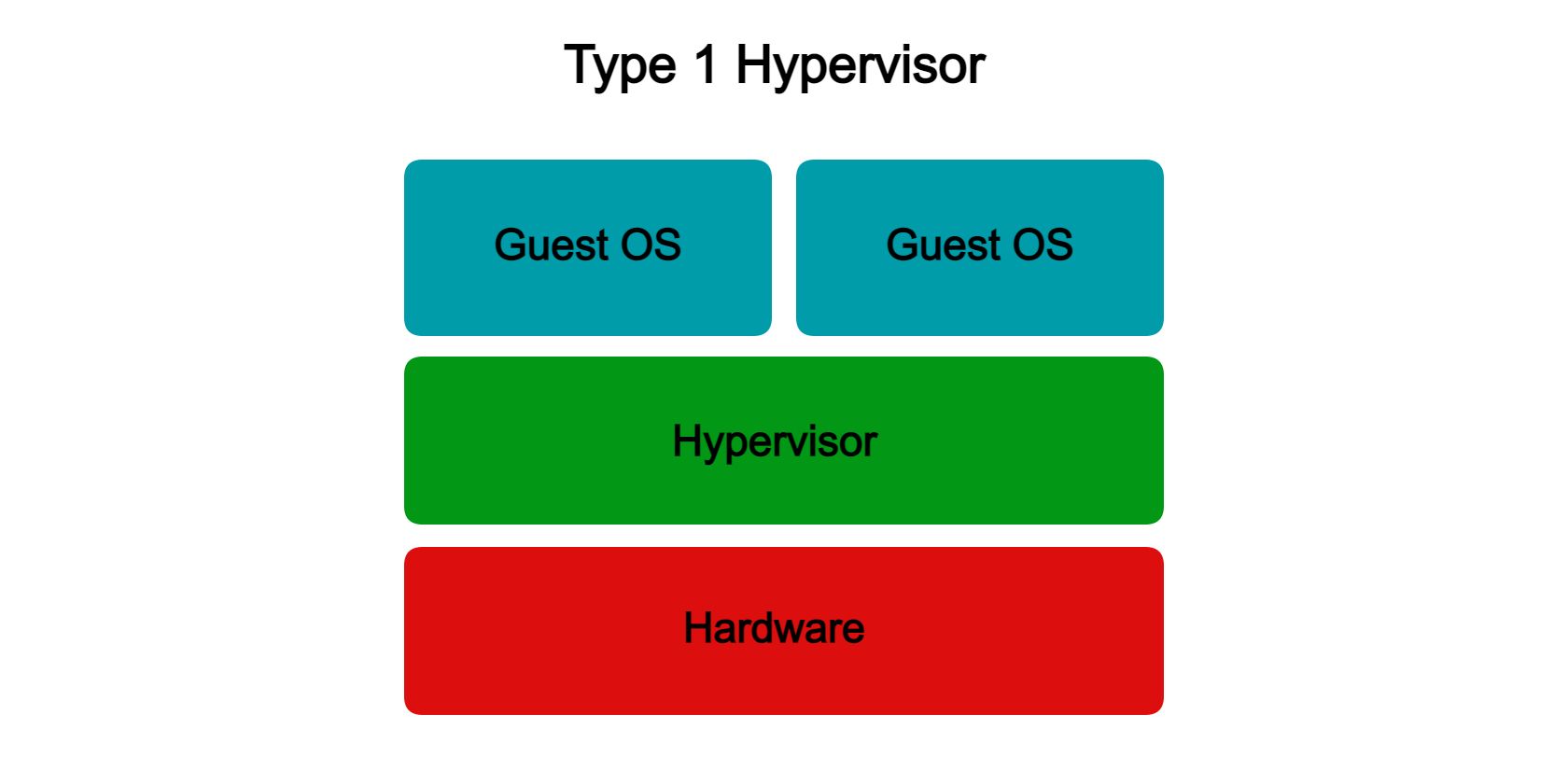Virtualization is an important part of modern workflows. The ability to run multiple operating systems off the same hardware can be a great help in both enterprise and personal environments.
However, with more choices than ever regarding virtualization programs, deciding what type of hypervisor you need can make or break your virtualization experience.
What Is a Hypervisor?
A hypervisor, originally called a Virtual Machine Monitor or VMM, is a piece of software that makes virtualization possible. A hypervisor's job is to create a separate layer dividing the actual hardware components and distributing them to the different OSes running in different VMs (virtual machines).
There are two main types of hypervisors.
- Type 1 (also known as bare metal hypervisors)
- Type 2 (also known as hosted hypervisors)
What Is a Type 1 Hypervisor?
Type 1 Hypervisors don't require a host operating system. This means that the virtualization software runs directly on top of the system hardware (hence the name bare metal) and essentially acts as a specialized operating system. These hypervisors allow guest VMs to interface directly with the system hardware instead of going through a host OS, as with Type 2 hypervisors.
Type 1 hypervisors can be tricky to install and set up initially, especially for users who don't have a lot of experience working outside of a conventional OS. However, they have some pretty big advantages.
First and foremost, Type 1 hypervisors provide better performance. Since the virtualization software and, by extension, VMs interface with the hardware directly; they can use more of the same resource since there's no need to reserve resources for a host OS. Additionally, Type 1 hypervisors are more secure since the guest VMs are isolated by nature and can't talk to each other unless set up otherwise. This also means that the VM is free from any vulnerabilities that might affect the host OS.
There are several other differences between Type 1 and Type 2 hypervisors. However, Type 1 hypervisors are generally considered better for the aforementioned reasons. However, remember that while they might run on regular computers, they're best suited for server hardware.
One of the most popular Type 1 hypervisors is VMware's ESXi. Other popular examples include KVM, Red Hat Enterprise Virtualization (RHEV), Xen, and Windows Server 2012 Hyper-V (simply referred to as Hyper-V).
Running a VM Has Never Been Easier
If you have the hardware available, running a Type 1 hypervisor is a great way to deploy multiple VMs without worrying about performance and security issues.
Virtualization can be a great time saver if you need to run multiple OSes, as it saves you the hassle of dealing with a dual-boot system. Not to mention the time you'll save from not having to switch between OSes.


